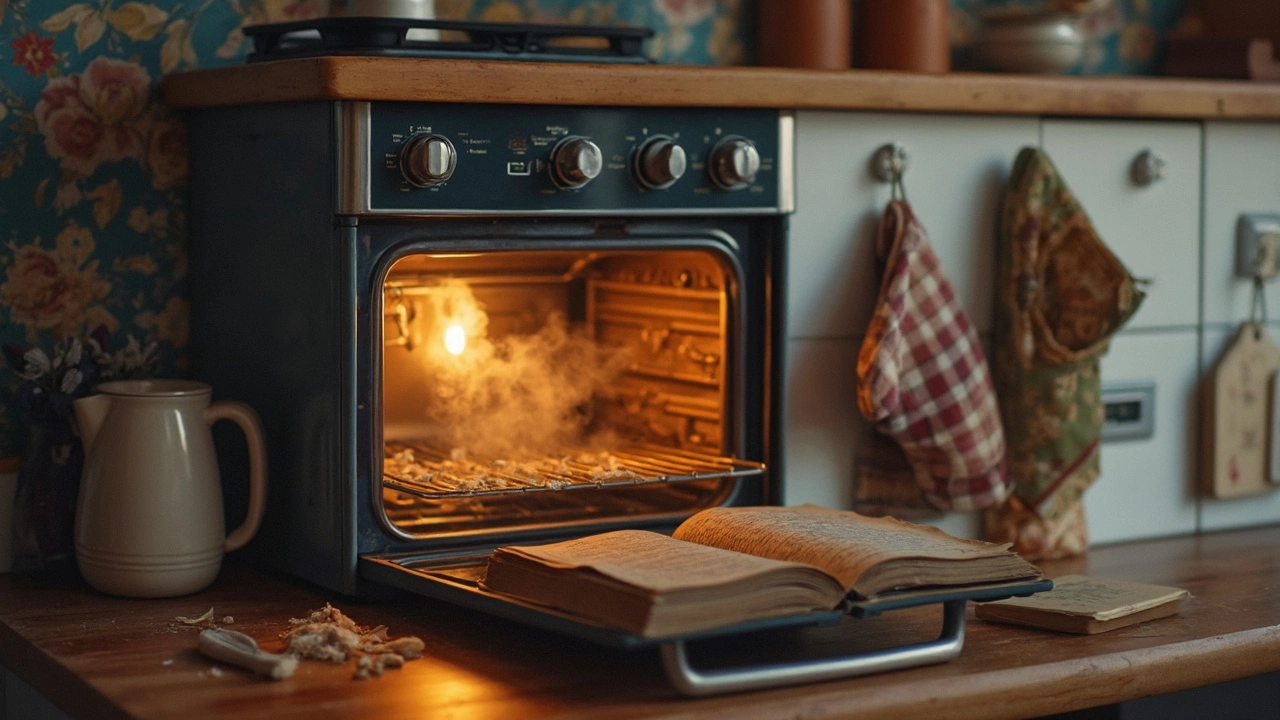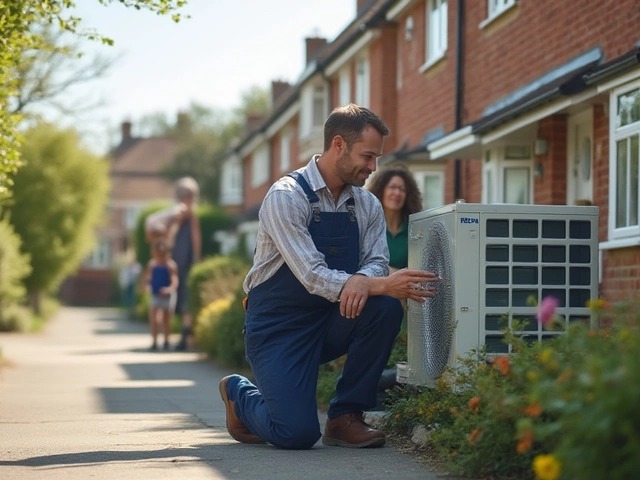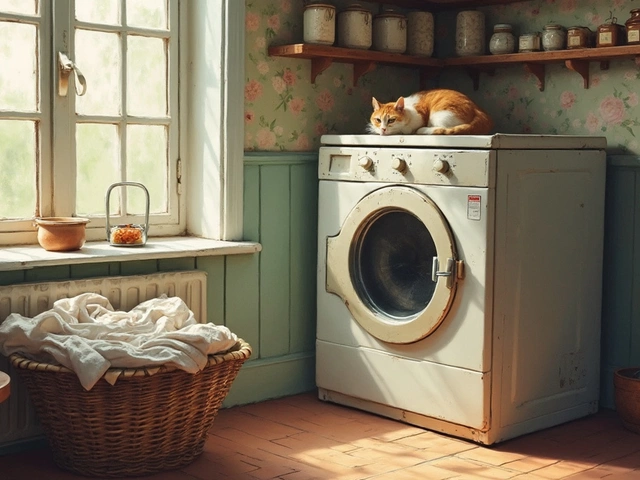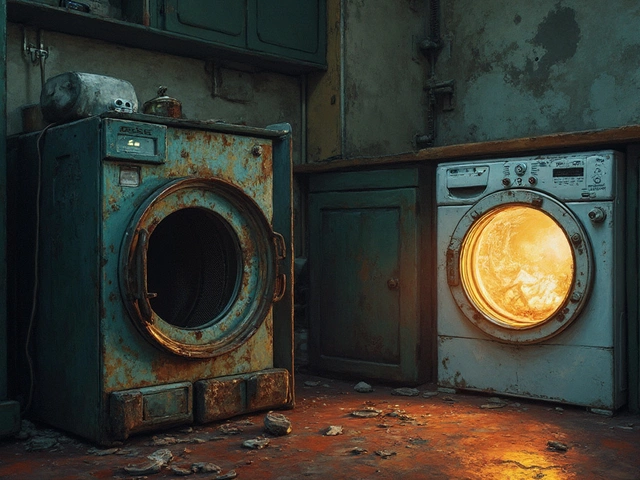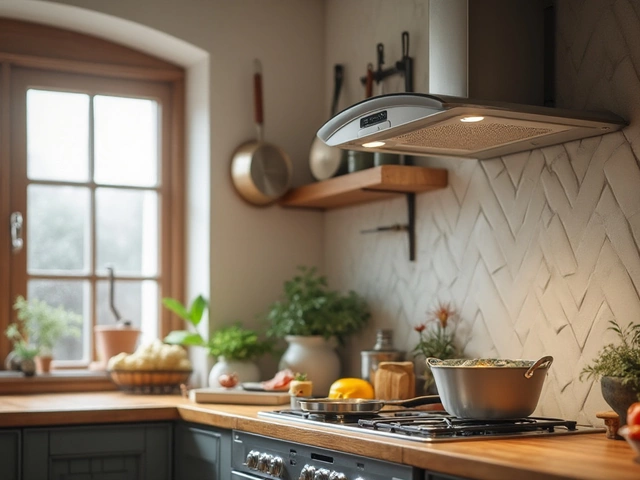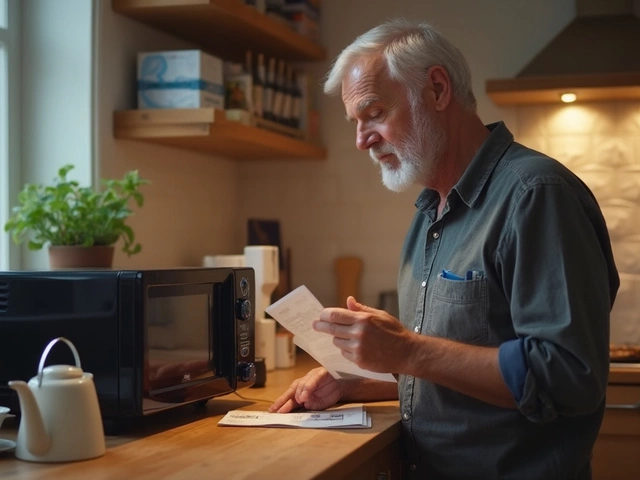Ever flipped open your oven door, hoping for a perfectly cooked lasagna, only to find that one side is still cold? It's annoying, right? Seems like your electric oven might be throwing a tantrum. Uneven cooking is one of those typical hiccups with ovens.
But before you panic or consider shelling out big bucks for a replacement, let's check a few things. It could be something as simple as a heating element on the fritz or, perhaps, a twitchy thermostat. A few small tweaks might just get your kitchen buddy back on track.
Start by checking if the heating elements have any visible damage. These are those glowing rods at the top or bottom of your oven. A broken or malfunctioning element could easily mess up cooking temps, leading to crispy edges on one side and doughy bits on the other.
Thinking about diving into a fix on your own? Great! Remember to always unplug the oven before you start poking around. Safety first! And if anything looks too complex, it might be worth a call to a pro. But don't worry, not all issues require expert intervention. Some fixes are easier than you think, even if you're more familiar with 'add to cart' than 'add to toolbox.' Stay tuned, and we'll explore some basic tips and tricks you can try to bring your oven back to its former glory.
- Introduction to Common Oven Problems
- Uneven Cooking or Baking
- Electric Oven Won't Heat
- Strange Noises and Their Meanings
- DIY Fixes Before Calling a Pro
- When to Seek Professional Help
Introduction to Common Oven Problems
Let's face it, our trusted electric ovens can sometimes act up. Whether it’s for a family dinner or just some comfort baking, an oven breakdown is never fun. But before you go into full panic mode, let's dive into what could be going wrong.
The most common issues usually revolve around heating problems, erratic cooking results, or even strange noises. It might sound complicated, but often these are things you can figure out with a bit of detective work. According to an appliance repair survey, about 60% of oven problems are related to faulty heating elements or thermostat issues. These are usually the low-hanging fruit you can troubleshoot.
“A well-maintained oven not only improves cooking results but also extends the appliance’s lifespan,” advises Chris Hall, appliance repair expert at Consumer Reports.
We rely on automation so much these days that witnessing a machine mess up can seem daunting. Yet, many oven repair tasks don’t require a pro. For instance, checking the alignment of your racks, ensuring nothing is blocking your fan or inspecting your door seal can make all the difference. It might surprise you to learn that such simple adjustments are often the remedy for uneven cooking.
Common Symptoms
To troubleshoot effectively, understand the symptoms:
- Electric oven won't heat: Often a culprit is a broken heating element or a power issue. Make sure you check your circuit breaker first!
- Strange noises: A weird hum or buzz could indicate a problem with the fan motor or a loose part.
- Uneven cooking: This is frequently caused by a faulty thermostat or a fan that's not circulating air properly.
These insights should give you a clearer picture of what's happening inside that metal box. Tackling these problems might seem intimidating, but remember, a good homeowner toolkit and a willingness to learn can make a big difference. After all, not every issue calls for professional intervention. Some just need a little elbow grease and patience.
Uneven Cooking or Baking
Dealing with uneven cooking or baking can really spoil your meal plans. You're munching on your long-awaited casserole, and bam! One bite is hot, the next is too chewy or underdone. So, what gives?
First off, your electric oven's heating elements could be the culprits. Whether they're the bake or broil elements, any damage or break in these can lead to inconsistent heating. Open your oven and peek at these elements. If they're cracked or not glowing when you test them, then that's your problem right there.
How to Spot Heating Issues
- Visual Inspection: Check those heating rods. They should heat up evenly; if they don't, you've identified the bad apple.
- Temperature Testing: Arm yourself with an oven thermometer. Place it inside and see if the temperature aligns with your settings. If it's off, your thermostat might be moody.
Level Up Your Baking Game
Bakeware type can sometimes mess up your cooking routine. Dark pans absorb more heat compared to their glass counterparts, throwing off your temps. Try playing with rack positions too. Generally, the center is your sweet spot for even heat distribution.
If your oven is aging, the calibration may be out of whack. You'd be surprised how a 25-degree difference can affect your bread rise or cake texture.
Quick Tips to Fix the Issue
- Check Rack Positions: Cooking in the middle rack often gives the best results.
- Evaluate the Bakeware: Stick to lighter-colored pans if the outside of your dish cooks too fast.
- Ensure Air Circulation: Avoid overcrowding to let the air circulate freely.
- Thermostat Check: If you're handy around the house, consider calibrating the thermostat yourself or bring in a professional.
Sometimes, problems like these can have you thinking about calling a repair service. Before you do that, give these tips a solid try. Chances are, these small tweaks might just be what your oven needs to cook things right!
Electric Oven Won't Heat
So, there you are, all set to bake your famous chocolate chip cookies, but the oven refuses to heat up. It sounds like a nightmare, right? Good news is, you're not alone, and this is a pretty common issue with electric ovens.
Check the Power Supply
Before blaming the oven, have a look at the basics. Is it plugged in? Is the circuit breaker tripped? If everything seems fine, it might be time to look deeper.
Faulty Heating Elements
Ovens usually have two main heating elements: one for baking and one for broiling. When these go out, the entire system is impacted. Visually inspect these elements for breaks or blisters. If you spot anything suspicious, it's likely time for a replacement.
Thermostat Troubles
The thermostat is the oven's brain, regulating temperature. If it's on the blink, the oven might not heat properly. You can usually test this with an oven thermometer, checking if the internal and set temperatures match.
Broken Igniter
For ovens with a gas hookup but electric controls, a finicky igniter could be the culprit. If there's no bright glow or clicking noise when you try to light it, the igniter might need attention.
Control Board Malfunction
Ah, technology! While control boards offer precision, they sometimes falter. If the oven's digital display looks cracked or doesn’t respond, a repair or replacement is probably in order.
- Try unplugging the oven for a minute or two to reset it.
- Double-check your settings to ensure everything’s as it should be.
If these steps don't fix your electric oven, it might be a sign to call in the professionals. But hey, at least you’ve ruled out a bunch of stuff that could've been an easy DIY fix!
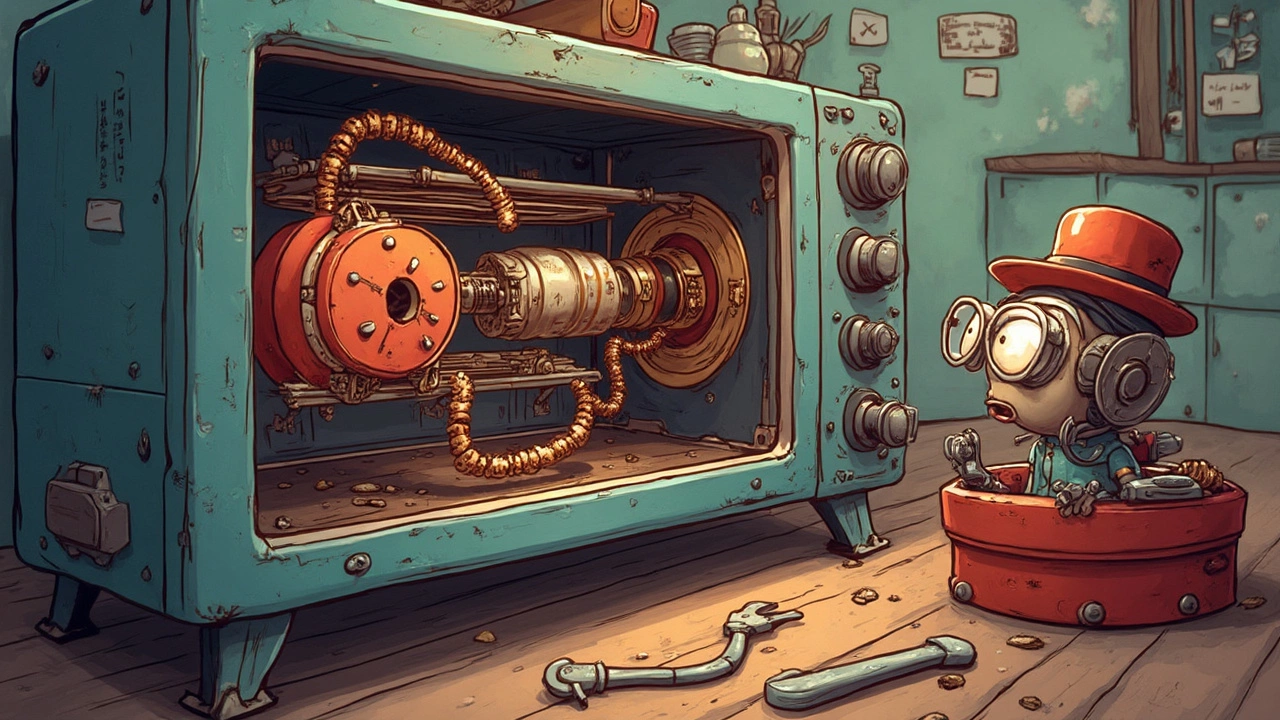
Strange Noises and Their Meanings
Have you ever been startled by some eerie sounds coming from your electric oven? Don’t worry—you’re not alone. An electric oven making strange noises is like a car giving you clues before conking out. Each sound tries to tell you exactly what’s going on inside.
The Classic Buzzing
If you hear a consistent buzzing sound while your oven is running, it could be a fan issue. The fan might be loose or obstructed, causing it to vibrate. While this won’t stop your oven from working entirely, it’s something you might want to fix to avoid further damage.
Popping or Snapping Sounds
Odd popping noises can often signal a sparking issue related to the heating elements. This isn't uncommon but can definitely be alarming the first time you hear it. An element might be arcing, meaning electrical sparks are jumping across a gap. It's a good idea to address this sooner rather than later.
John Doe, a certified appliance repair technician, once said, "Any unexpected noise from your oven can indicate something’s not right. It's best to pay attention early on, as ignoring it can lead to bigger issues down the line."
Rattling Noises
Rattling typically suggests something is loose inside the oven. The culprit could be anything from loose screws to a damaged part that's fallen into the oven’s inner workings. Do a quick interior check for anything obvious, but otherwise, it might be time for some pro advice.
Dealing with the Noise
- Identify the source: Before diving into a fix, try to locate where the sound is coming from. Most of the time, it's either the fan or the heating elements.
- Check for foreign objects: Make sure there isn’t anything small or metallic that’s fallen into the cavity of the oven. Loose objects can cause strange noises when the oven vibrates.
- Consult the manual: Sometimes the manufacturer’s guide can give specific instructions for your oven model, which can be super helpful.
- Call a pro: If you’re stumped and the noise continues, reaching out for professional help could be the best decision.
Strange noises can feel like a mystery, but often they're helpful clues that something inside your oven needs a second look. Stay calm and tackle the issue while it's still small. No one wants a scary sound evolving into a real issue during family dinner prep!
DIY Fixes Before Calling a Pro
Got a broken electric oven? Don't fret—there are a few fixes you can try before dialing up a repair expert. What's crucial here is knowing where to start and keeping things simple. First things first: safety. Always unplug your oven before you start tinkering around. You don't want an unexpected zap adding to your problems!
Check the Heating Elements
The heating elements are the prime suspects when it comes to uneven cooking or an oven not heating up. Take a look—do they glow evenly? Do they have any visible damage, like breaks or blisters? If they look off, you might need to replace them. It's usually a straightforward task you can tackle with some DIY gusto.
Test the Thermostat
Maybe it's not your elements but your thermostat throwing shade. If your oven’s temps swing wildly, you’ve got a thermostat issue. Get an oven thermometer and test the actual temperature against what your oven says it is. If it's way off, you might need to recalibrate it. Refer to your oven's manual for guidance.
Problematic Door Gaskets
Worn-out door gaskets (those rubber seals around your oven door) can allow heat to escape, which is great for a sauna but not your cake. If they're torn or brittle, replace them. It's a quick fix that could save your dinner from doom.
Control Panel and Knobs
- Check your knobs: Make sure they’re not loose or broken. Replace them if they are.
- Inspect the control panel: Sometimes, buttons might be stuck or malfunctioning. Gently clean around them, and remove any gunk.
According to John Mann, a veteran appliance technician, "Most oven issues can be traced back to simple things—like faulty gaskets or misaligned elements. Yet, these are often things people overlook, opting to replace whole units unnecessarily."
The Persistence of Problems
If none of these fixes seem to do the trick, it might be time to call a pro. But hey, at least you'll know you gave it your best shot and perhaps saved a bit on something easily fixable. You might even score bonus points with any repair tech for giving it a go before tossing it in their lap!
When to Seek Professional Help
Alright, sometimes things go beyond the typical DIY territory, and it becomes clear that calling in a pro isn't just a luxury—it's a necessity. But how do you know when it's that time? Let's break it down.
Signs That Scream for a Professional
If your electric oven simply won't heat up at all, even after tinkering with basic fixes, this might point to a deeper issue like a faulty wiring or a kaput thermostat that needs a trained eye. It's pretty common, and getting it fixed right the first time can save you a heap of headaches.
Also, if the oven makes some weird, loud noises like banging or buzzing (and you've ruled out loose trays or pans), trust me, it's time to call someone who knows their stuff. These noises are often clues to belt or motor issues, which aren't straightforward DIY fixes.
Dealing with Electric Components
Meddling with electrical parts can be risky business. Faulty connections, after all, are best left to professionals who won’t turn your oven into a home hazard. If you notice sparking or any burning smells, that's your cue to step back and let a technician handle it.
Warranty and Long-term Investment
Keep in mind that tackling repairs yourself might void any warranty you have—ouch! Sometimes, spending a bit now on a repair can be a smarter move financially. A well-maintained oven can last many more years, and that's always nice on the wallet.
| Common Issues | When to Call a Pro |
|---|---|
| Oven won't heat | No apparent DIY fix |
| Loud or strange noises | Suspected belt/motor problem |
| Sparking or burning smell | Faulty wiring suspected |
Remember, sometimes the hassles and potential risks of DIY repairs just aren't worth it, especially when you can have peace of mind knowing a professional has done it right. Every issue you tackle yourself makes you a little more prepared, but knowing your limits is equally important.
